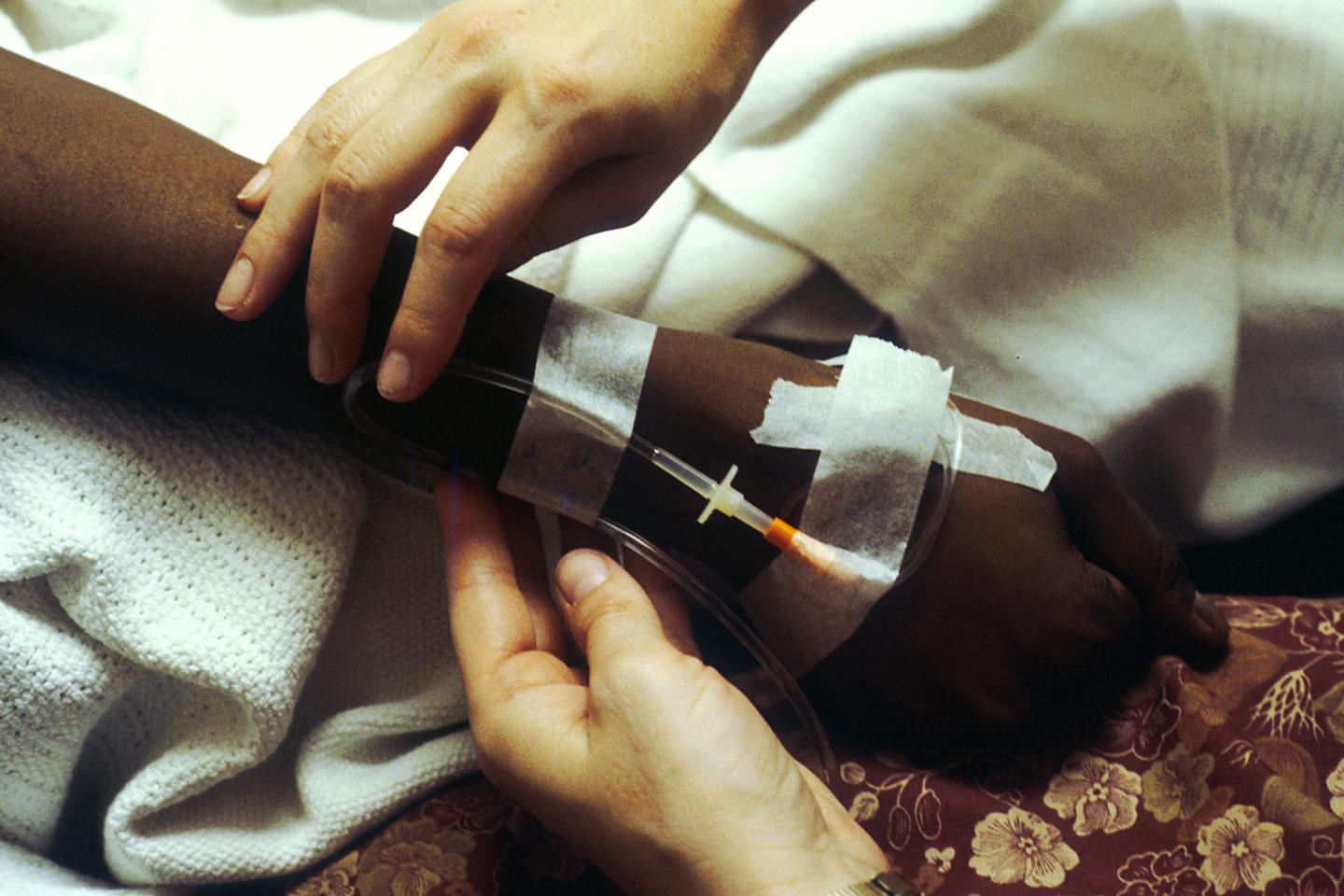
This image shows two hands manipulating an IV for chemotherapy administration to a patient. A new study published in IOP Publishing's journal 2D Materials has proposed using graphene as an alternative coating for catheters to improve the delivery of chemotherapy drugs.
The research suggests that placing graphene - an extremely thin sheet of carbon atoms - on the internal surfaces of intravenous catheters commonly used to deliver chemotherapy drugs into a patient's body will improve the efficacy of treatments, and reduce the potential of the catheters breaking.
The study indicates that damaging interactions can occur between the most commonly used chemotherapy drug, 5-Fluorouracil (5-Fu), and silver--one of the most widely used coating materials in medical applications.
As a result of this damage the researchers believe the drug may not deliver the desired therapeutic effect in patients, and that chemotherapy treatment may be compromised.
Furthermore, the research indicates that a by-product of the reaction between 5-Fu and silver is hydrogen fluoride (HF), a strong acid. This raises concerns that silver and HF may be injected into the patient along with the treatment.
Co-author of the study Justin Wells, from the Norwegian University of Science and Technology, said: "As far as we know, nobody has ever looked at the chemical reaction between chemotherapy drugs and the materials they routinely come into contact with, such as catheters and needles and their coatings. It is just assumed that the drugs are delivered into the body intact.
"We have shown that silver is catalytically degrading the chemotherapy drugs, which means they are probably not being correctly delivered into the patient. Our research indicates that one of the decay products of this reaction is HF, which would be a worrying thing to inject into a patient."
As a solution to this problem, the international team of researchers have proposed using graphene as an alternative coating material for catheters.
In their study, the researchers used a technique known as x-ray photoemission spectroscopy (XPS) to study the chemical composition of 5-Fu, as well as the drug's reactions with silver and graphene.
XPS is a technique used to measure the surface chemistry of a particular material by firing a beam of x-rays at it and collecting the electrons that are subsequently emitted from the very top layer of the material. The researchers performed these measurements at the Swedish national synchrotron laboratory--MAX IV Laboratory.
Their results showed that when 5-Fu comes into contact with silver, reactions occur in which there is a massive loss of the element fluoride from the drug, leading to the creation of HF.
When the researchers repeated this experiment with 5-Fu and graphene, they found that these reactions completely disappeared and that graphene caused no damage to the drug.
Graphene is a biocompatible material with low toxicity that has already been suggested as an external coating for biomedical applications. The researchers state that the fabrication of thin graphene coatings is technological feasible and can even be grown on top of silver to maintain compliance with existing fabrication methods.
"Our findings are an important first step in this new field. Together with our collaborators and students, we are increasing our understanding of the critical interactions between drugs and medical coatings, with a view to making the knowledge freely available for all to use," Wells continued.
"This study was a simplified version of real life chemotherapy treatment, so our future studies will look to mimic the processes more closely by examining real drug mixtures that contain other active ingredients as well as a salt solution. We will also look to extend our experiments to include other chemotherapy drugs."
Source: Institute of Physics
 Print Article
Print Article Mail to a Friend
Mail to a Friend
